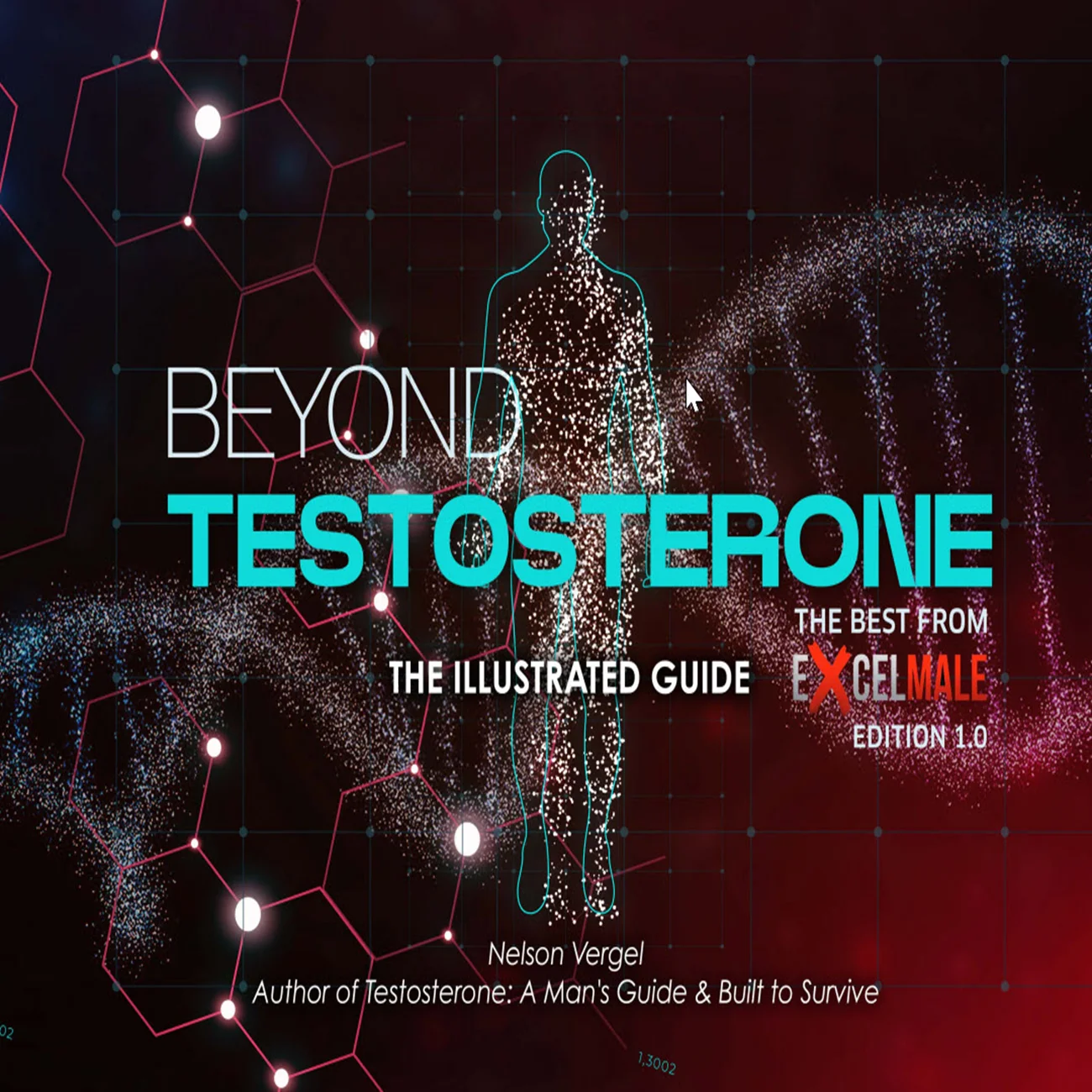This review investigates the use of the synthetic steroid oxandrolone across various clinical populations. The review analyzes twenty-four randomized controlled trials to synthesize evidence regarding the safety and effectiveness of oxandrolone for conditions such as severe burns, HIV-associated weight loss, Turner syndrome, and Klinefelter syndrome. Overall, the findings suggest that oxandrolone is associated with improvements in body composition indices and reduced hospitalization time, generally exhibiting a low incidence of adverse effects, though elevated liver enzymes and musculoskeletal complaints were the most commonly reported side effects. The authors emphasize the need for further investigations due to the heterogeneity in the studies reviewed, particularly concerning the optimal dosage and long-term outcomes for specific diseases.


Fig. 2. Population (children/adolescents and adults/older adults) with main reported outcomes for specific diseases.
ABSTRACT
Background
Oxandrolone is a synthetic chemical compound derived from testosterone with a 17-alpha-alkylated structure, showing high potential to enhance the hypermetabolic response and improve clinical outcomes.
Objectives
We aimed to synthesize evidence regarding the safety and effectiveness of Oxandrolone for recognized health problems.
Data sources
A systematic review was performed across six databases using Medical Subject Headings (MeSH) terms and keywords.
Study eligibility criteria, participants, and interventions:
We included randomized controlled trials involving children, adolescents, adults, and older adults treated with oral Oxandrolone at doses ranging from 5 to 80 mg.
Study appraisal and synthesis methods
Two reviewers independently conducted the selection, extraction, and quality assessment processes. A protocol was registered in PROSPERO (CRD42024539483).
Results
A total of 24 studies with 1905 participants were included. In children with burns, Oxandrolone increased bone mineral content, preserved lean body mass, and reduced intensive care length of stay. In children with Klinefelter Syndrome, it improved lean body mass and measures of cardiometabolic health. Positive effects on weight and well-being were noted in adults with HIV, and improvements in lean mass and muscle strength were observed in older women. Most reported adverse events were elevated liver enzymes and musculoskeletal complaints.
Limitations
Studies showed heterogeneity in populations, interventions, and outcomes assessed.
Conclusions and implications of key findings
Oxandrolone administration appears to be associated with improvements in body mass, composition indices, and reduced hospitalization time, with a low incidence of side effects. Further investigations are necessary to confirm clinical benefits for specific diseases.
5. Conclusion
This systematic review investigated the safety and effectiveness of Oxandrolone as therapy for several health problems. When comparing this substance with placebo, the results demonstrate Oxandrolone has significant benefits such as increase in body mass and composition indexes and a shorter time of length of hospital stay and intensive care unit stay. Oxandrolone appears to be safe and has a low incidence of side effects, with the majority of adverse events related to increased liver function and musculoskeletal complaints. It is worth to note there is no consensus in the administered dose and previous studies have shown that liver enzyme activities are increased in oxandrolone-treated groups, therefore, careful consideration in future studies is advisable.
________________________________
Briefing Document: Systematic Review of Oxandrolone Safety and Effectiveness
Executive Summary
This document synthesizes the findings of a systematic review published in Endocrine and Metabolic Science, which evaluated the safety and effectiveness of oxandrolone across various clinical conditions. The review, registered in PROSPERO (CRD42024539483), analyzed 24 randomized controlled trials involving 1,905 participants, ranging from children to older adults.
The primary conclusion is that oxandrolone administration is associated with significant benefits, including improvements in body mass and composition, and reduced hospitalization time. It appears to be a safe and tolerable therapy with a low incidence of severe side effects. Key positive outcomes were observed in specific populations:
• Children with Burns: Increased bone mineral content, preservation of lean body mass, and shorter stays in intensive care.
• Children with Klinefelter Syndrome: Improved lean body mass, better cardiometabolic health measures, and enhanced psychosocial function.
• Adults with HIV: Positive impact on weight gain and overall well-being.
• Older Women: Increased lean mass and muscle strength.
The most frequently reported adverse events were musculoskeletal complaints and elevated liver enzymes. Notably, elevated liver function tests were common but typically reversible, returning to baseline within four weeks of drug discontinuation. The review highlights significant heterogeneity among the included studies in terms of populations, interventions, and outcome measures, which precluded a meta-analysis. A consensus on the ideal oxandrolone dosage has not been established, with daily oral doses in the reviewed trials ranging from 1.25 mg to 80 mg. Further research with standardized outcomes is necessary to confirm clinical benefits and establish optimal dosing for specific diseases.
-----------------------------------------------------------
1. Overview of the Systematic Review
This systematic review aimed to synthesize evidence regarding the safety and effectiveness of the synthetic anabolic steroid oxandrolone for recognized health problems. The review was conducted in accordance with the Cochrane Handbook and PRISMA 2020 guidelines.
• Study Selection: The review included 24 randomized controlled trials (RCTs) from an initial pool of 576 records. The total number of participants across these studies was 1,905.
• Population: Participants included children, adolescents, adults, and older adults.
• Interventions: All included studies involved treatment with oral oxandrolone, with daily doses ranging from 1.25 mg to 80 mg. Comparators included placebo, usual care, or other treatments such as megestrol acetate and prednisone.
• Conditions Studied: The trials covered a wide range of pathologies, including severe burns, HIV-associated weight loss, Turner syndrome, Klinefelter syndrome, Duchenne dystrophy, alcoholic hepatitis, and sarcopenia (age-related mass loss).
2. Key Efficacy Findings by Population and Condition
The review separated the analysis of oxandrolone's effects based on the participant population (children/adolescents vs. adults/older adults) and their specific clinical condition.
2.1. Children and Adolescents
Burns (4 studies):
• Body Composition: Preserved lean body mass (LBM) in treated patients, whereas control patients lost 8% of their LBM. It also increased bone mineral content.
• Protein Metabolism: Long-term treatment increased the net deposition of leg muscle protein by reducing protein breakdown.
• Clinical Outcomes: Significantly decreased the length of stay in the intensive care unit (ICU).
• Combined with Exercise: The combination of oxandrolone and exercise produced significant improvements in weight, LBM, and muscle strength compared to placebo with exercise, oxandrolone alone, or placebo alone.
Klinefelter Syndrome (4 studies):
• Body Composition: Treated boys gained an average of 8.5 ± 3.1 kg of LBM, leading to positive effects on cardiometabolic health measures.
• Psychosocial and Cognitive Function: Associated with positive effects on visual-motor integration and psychosocial function, including improvements in anxiety/depression and social problems, without worsening hyperactive or aggressive behaviors.
• Pubertal Development: Treatment in prepubertal boys was associated with an increased risk of early gonadarche (puberty onset), on average two years earlier than placebo-treated boys.
• Tolerability: The drug was well-tolerated, with no serious adverse events attributed to it.
Turner Syndrome (3 studies):
• Cognitive Function: Demonstrated improved performance in working memory after two years of treatment, particularly in digit span-backward and word list-immediate recall. No significant changes were observed in verbal abilities, spatial cognition, or executive function.
• Growth: Confirmed a beneficial effect on final height, with one study showing a significant increase of 4.1 cm compared to placebo.
• Metabolism: Showed significant effects on carbohydrate metabolism.
• Safety: Oxandrolone was well-tolerated. Side effects were minimal and included mild, reversible clitoromegaly in three patients and mild, reversible increases in SGPT (a liver enzyme) in three subjects.
Duchenne Dystrophy (1 study):
• Muscle Strength: After six months, the oxandrolone group's strength did not worsen, while placebo patients showed some deterioration. No adverse reactions attributable to the drug were recorded.
2.2. Adults and Older Adults
HIV-Seropositive (3 studies):
• Weight and Body Composition: Had a positive impact on the weight and well-being of patients. Treatment increased all body mass and composition indices.
• Hormonal Effects: Treatment was associated with a significant suppression of sex hormone binding globulin (SHBG), luteinizing hormone (LH), follicle-stimulating hormone (FSH), and total and free testosterone levels.
• Safety: Oxandrolone was found to be safe and well-tolerated during Highly Active Antiretroviral Therapy (HAART). Reported adverse events (fever, rash, diarrhea) were common symptoms of HIV itself.
Burns (4 studies):
• Recovery and Body Composition: In rehabilitation, patients receiving oxandrolone regained weight and lean mass two to three times faster than with nutrition alone. This restored mass was maintained six months after discontinuing the drug.
• Clinical Outcomes: Findings on hospitalization were mixed. One study reported a longer ICU stay and ventilator time for oxandrolone patients, while two other studies found shorter lengths of stay and less time on ventilatory support.
• Safety: The review suggests that oxandrolone should be considered for use in severely burned patients, provided that hepatic transaminases are monitored.
Age-Related Mass Loss & Body Myositis (2 studies):
• Mass Loss (Older Men): Produced significant increases in total LBM, appendicular LBM, muscle volume, and maximal voluntary strength after 12 weeks. However, it did not improve functional measures such as walking speed.
• Body Myositis (Older Adults): Had a significant effect on improving upper-extremity strength and a borderline significant effect on whole-body strength. LBM increased by 1.1% with oxandrolone versus a 0.6% decrease with placebo.
Alcoholic Hepatitis (1 study):
• Survival: While it did not improve short-term survival compared to placebo or prednisolone, oxandrolone therapy was associated with a beneficial effect on long-term survival.
Spinal Cord Injury (1 study):
• Wound Healing: Showed no benefit over placebo for improving the healing of chronic pressure ulcers.
• Safety: While no serious adverse events were related to oxandrolone, liver enzyme levels were elevated in 32.4% of recipients compared to just 2.9% of placebo recipients.
Multiple Trauma/Obesity (1 study):
• Clinical Outcomes: A 20 mg/day dose did not provide obvious benefits in nutritional or clinical outcomes (e.g., length of hospital stay, frequency of pneumonia or sepsis) during the first month after multiple trauma.
3. Safety Profile and Adverse Events
Oxandrolone was generally reported as a tolerable drug with high adherence rates (87%). However, several adverse events were noted across the reviewed studies.
3.1. Common Adverse Events
Based on quantitative data from five studies, the following table summarizes the percentage of patients reporting specific side effects for oxandrolone compared to placebo.
Note: The interpretation of these percentages requires caution, as they may be influenced by the severity of the underlying conditions being treated.
3.2. Hepatotoxicity
• The most significant safety concern identified was elevated liver enzymes (hepatotoxicity). One study reported elevated levels in 32.4% of oxandrolone recipients versus 2.9% of placebo recipients.
• This side effect appears to be transient. Studies noted that elevated liver enzyme levels typically returned to baseline values approximately four weeks after drug discontinuation or dose reduction.
• The review strongly recommends monitoring liver function during oxandrolone therapy to detect and manage potential hepatotoxicity early.
3.3. Hormonal Effects
• In a study of men with HIV-related weight loss, oxandrolone treatment led to a significant suppression of luteinizing hormone (LH), follicle-stimulating hormone (FSH), sex hormone binding globulin (SHBG), and both total and free testosterone levels. It is recommended to use oxandrolone along with testosterone replacement therapy (TRT).
• The same study noted that LDL cholesterol levels increased while HDL levels decreased.
4. Limitations and Methodological Considerations
• Heterogeneity: The primary limitation of the review was the significant heterogeneity across the 24 included studies regarding patient populations, pathologies, intervention dosages, and outcome measurement tools. This diversity made it impossible to conduct a meaningful meta-analysis.
• Dosage: There is no consensus on the ideal dosage of oxandrolone, with a wide range (1.25 mg to 80 mg daily) used across the trials.
• Risk of Bias: The methodological quality of the included studies varied. While six studies were assessed as having a low overall risk of bias, ten studies did not provide sufficient detail on blinding procedures, and seven reported high withdrawal rates. Furthermore, only seven of the 24 studies reported a pre-specified protocol, raising concerns about the potential for selective reporting.
5. Conclusion and Implications
This systematic review concludes that oxandrolone therapy demonstrates significant benefits for improving body mass and composition indices and reducing hospitalization times across several clinical conditions. The drug appears to be safe, with a low incidence of side effects. The most common adverse events are musculoskeletal complaints and transiently elevated liver enzymes.
The review highlights a critical need for future research to address the current limitations.
Recommendations include:
• Conducting further investigations with standardized health parameters and outcome measures to confirm clinical benefits for specific diseases.
• Establishing a consensus on ideal dosages to optimize efficacy while minimizing side effects.
• Exploring alternative routes of administration, such as subcutaneous delivery, which could potentially reduce liver-related side effects and improve patient adherence.
Fig. 2. Population (children/adolescents and adults/older adults) with main reported outcomes for specific diseases.
ABSTRACT
Background
Oxandrolone is a synthetic chemical compound derived from testosterone with a 17-alpha-alkylated structure, showing high potential to enhance the hypermetabolic response and improve clinical outcomes.
Objectives
We aimed to synthesize evidence regarding the safety and effectiveness of Oxandrolone for recognized health problems.
Data sources
A systematic review was performed across six databases using Medical Subject Headings (MeSH) terms and keywords.
Study eligibility criteria, participants, and interventions:
We included randomized controlled trials involving children, adolescents, adults, and older adults treated with oral Oxandrolone at doses ranging from 5 to 80 mg.
Study appraisal and synthesis methods
Two reviewers independently conducted the selection, extraction, and quality assessment processes. A protocol was registered in PROSPERO (CRD42024539483).
Results
A total of 24 studies with 1905 participants were included. In children with burns, Oxandrolone increased bone mineral content, preserved lean body mass, and reduced intensive care length of stay. In children with Klinefelter Syndrome, it improved lean body mass and measures of cardiometabolic health. Positive effects on weight and well-being were noted in adults with HIV, and improvements in lean mass and muscle strength were observed in older women. Most reported adverse events were elevated liver enzymes and musculoskeletal complaints.
Limitations
Studies showed heterogeneity in populations, interventions, and outcomes assessed.
Conclusions and implications of key findings
Oxandrolone administration appears to be associated with improvements in body mass, composition indices, and reduced hospitalization time, with a low incidence of side effects. Further investigations are necessary to confirm clinical benefits for specific diseases.
5. Conclusion
This systematic review investigated the safety and effectiveness of Oxandrolone as therapy for several health problems. When comparing this substance with placebo, the results demonstrate Oxandrolone has significant benefits such as increase in body mass and composition indexes and a shorter time of length of hospital stay and intensive care unit stay. Oxandrolone appears to be safe and has a low incidence of side effects, with the majority of adverse events related to increased liver function and musculoskeletal complaints. It is worth to note there is no consensus in the administered dose and previous studies have shown that liver enzyme activities are increased in oxandrolone-treated groups, therefore, careful consideration in future studies is advisable.
________________________________
Briefing Document: Systematic Review of Oxandrolone Safety and Effectiveness
Executive Summary
This document synthesizes the findings of a systematic review published in Endocrine and Metabolic Science, which evaluated the safety and effectiveness of oxandrolone across various clinical conditions. The review, registered in PROSPERO (CRD42024539483), analyzed 24 randomized controlled trials involving 1,905 participants, ranging from children to older adults.
The primary conclusion is that oxandrolone administration is associated with significant benefits, including improvements in body mass and composition, and reduced hospitalization time. It appears to be a safe and tolerable therapy with a low incidence of severe side effects. Key positive outcomes were observed in specific populations:
• Children with Burns: Increased bone mineral content, preservation of lean body mass, and shorter stays in intensive care.
• Children with Klinefelter Syndrome: Improved lean body mass, better cardiometabolic health measures, and enhanced psychosocial function.
• Adults with HIV: Positive impact on weight gain and overall well-being.
• Older Women: Increased lean mass and muscle strength.
The most frequently reported adverse events were musculoskeletal complaints and elevated liver enzymes. Notably, elevated liver function tests were common but typically reversible, returning to baseline within four weeks of drug discontinuation. The review highlights significant heterogeneity among the included studies in terms of populations, interventions, and outcome measures, which precluded a meta-analysis. A consensus on the ideal oxandrolone dosage has not been established, with daily oral doses in the reviewed trials ranging from 1.25 mg to 80 mg. Further research with standardized outcomes is necessary to confirm clinical benefits and establish optimal dosing for specific diseases.
-----------------------------------------------------------
1. Overview of the Systematic Review
This systematic review aimed to synthesize evidence regarding the safety and effectiveness of the synthetic anabolic steroid oxandrolone for recognized health problems. The review was conducted in accordance with the Cochrane Handbook and PRISMA 2020 guidelines.
• Study Selection: The review included 24 randomized controlled trials (RCTs) from an initial pool of 576 records. The total number of participants across these studies was 1,905.
• Population: Participants included children, adolescents, adults, and older adults.
• Interventions: All included studies involved treatment with oral oxandrolone, with daily doses ranging from 1.25 mg to 80 mg. Comparators included placebo, usual care, or other treatments such as megestrol acetate and prednisone.
• Conditions Studied: The trials covered a wide range of pathologies, including severe burns, HIV-associated weight loss, Turner syndrome, Klinefelter syndrome, Duchenne dystrophy, alcoholic hepatitis, and sarcopenia (age-related mass loss).
2. Key Efficacy Findings by Population and Condition
The review separated the analysis of oxandrolone's effects based on the participant population (children/adolescents vs. adults/older adults) and their specific clinical condition.
2.1. Children and Adolescents
Burns (4 studies):
• Body Composition: Preserved lean body mass (LBM) in treated patients, whereas control patients lost 8% of their LBM. It also increased bone mineral content.
• Protein Metabolism: Long-term treatment increased the net deposition of leg muscle protein by reducing protein breakdown.
• Clinical Outcomes: Significantly decreased the length of stay in the intensive care unit (ICU).
• Combined with Exercise: The combination of oxandrolone and exercise produced significant improvements in weight, LBM, and muscle strength compared to placebo with exercise, oxandrolone alone, or placebo alone.
Klinefelter Syndrome (4 studies):
• Body Composition: Treated boys gained an average of 8.5 ± 3.1 kg of LBM, leading to positive effects on cardiometabolic health measures.
• Psychosocial and Cognitive Function: Associated with positive effects on visual-motor integration and psychosocial function, including improvements in anxiety/depression and social problems, without worsening hyperactive or aggressive behaviors.
• Pubertal Development: Treatment in prepubertal boys was associated with an increased risk of early gonadarche (puberty onset), on average two years earlier than placebo-treated boys.
• Tolerability: The drug was well-tolerated, with no serious adverse events attributed to it.
Turner Syndrome (3 studies):
• Cognitive Function: Demonstrated improved performance in working memory after two years of treatment, particularly in digit span-backward and word list-immediate recall. No significant changes were observed in verbal abilities, spatial cognition, or executive function.
• Growth: Confirmed a beneficial effect on final height, with one study showing a significant increase of 4.1 cm compared to placebo.
• Metabolism: Showed significant effects on carbohydrate metabolism.
• Safety: Oxandrolone was well-tolerated. Side effects were minimal and included mild, reversible clitoromegaly in three patients and mild, reversible increases in SGPT (a liver enzyme) in three subjects.
Duchenne Dystrophy (1 study):
• Muscle Strength: After six months, the oxandrolone group's strength did not worsen, while placebo patients showed some deterioration. No adverse reactions attributable to the drug were recorded.
2.2. Adults and Older Adults
HIV-Seropositive (3 studies):
• Weight and Body Composition: Had a positive impact on the weight and well-being of patients. Treatment increased all body mass and composition indices.
• Hormonal Effects: Treatment was associated with a significant suppression of sex hormone binding globulin (SHBG), luteinizing hormone (LH), follicle-stimulating hormone (FSH), and total and free testosterone levels.
• Safety: Oxandrolone was found to be safe and well-tolerated during Highly Active Antiretroviral Therapy (HAART). Reported adverse events (fever, rash, diarrhea) were common symptoms of HIV itself.
Burns (4 studies):
• Recovery and Body Composition: In rehabilitation, patients receiving oxandrolone regained weight and lean mass two to three times faster than with nutrition alone. This restored mass was maintained six months after discontinuing the drug.
• Clinical Outcomes: Findings on hospitalization were mixed. One study reported a longer ICU stay and ventilator time for oxandrolone patients, while two other studies found shorter lengths of stay and less time on ventilatory support.
• Safety: The review suggests that oxandrolone should be considered for use in severely burned patients, provided that hepatic transaminases are monitored.
Age-Related Mass Loss & Body Myositis (2 studies):
• Mass Loss (Older Men): Produced significant increases in total LBM, appendicular LBM, muscle volume, and maximal voluntary strength after 12 weeks. However, it did not improve functional measures such as walking speed.
• Body Myositis (Older Adults): Had a significant effect on improving upper-extremity strength and a borderline significant effect on whole-body strength. LBM increased by 1.1% with oxandrolone versus a 0.6% decrease with placebo.
Alcoholic Hepatitis (1 study):
• Survival: While it did not improve short-term survival compared to placebo or prednisolone, oxandrolone therapy was associated with a beneficial effect on long-term survival.
Spinal Cord Injury (1 study):
• Wound Healing: Showed no benefit over placebo for improving the healing of chronic pressure ulcers.
• Safety: While no serious adverse events were related to oxandrolone, liver enzyme levels were elevated in 32.4% of recipients compared to just 2.9% of placebo recipients.
Multiple Trauma/Obesity (1 study):
• Clinical Outcomes: A 20 mg/day dose did not provide obvious benefits in nutritional or clinical outcomes (e.g., length of hospital stay, frequency of pneumonia or sepsis) during the first month after multiple trauma.
3. Safety Profile and Adverse Events
Oxandrolone was generally reported as a tolerable drug with high adherence rates (87%). However, several adverse events were noted across the reviewed studies.
3.1. Common Adverse Events
Based on quantitative data from five studies, the following table summarizes the percentage of patients reporting specific side effects for oxandrolone compared to placebo.
Adverse Event | Oxandrolone (%) | Placebo (%) |
Musculoskeletal complaints | 63.0% | 46.0% |
Infections | 42.0% | 42.0% |
Elevated liver functions | 39.8% | 15.0% |
Urinary tract infection | 34.3% | 27.0% |
Headache | 23.0% | 25.0% |
Fever | 17.0% | 8.0% |
Hospitalization | 16.0% | 10.0% |
Anemia | 15.7% | 5.0% |
Dry skin | 7.0% | 7.0% |
Acne | 5.0% | 0.0% |
Nausea | 4.7% | 5.0% |
Seizure | 2.0% | 0.0% |
Bloated and swollen | 1.0% | 10.0% |
Decreased libido | 0.0% | 2.0% |
3.2. Hepatotoxicity
• The most significant safety concern identified was elevated liver enzymes (hepatotoxicity). One study reported elevated levels in 32.4% of oxandrolone recipients versus 2.9% of placebo recipients.
• This side effect appears to be transient. Studies noted that elevated liver enzyme levels typically returned to baseline values approximately four weeks after drug discontinuation or dose reduction.
• The review strongly recommends monitoring liver function during oxandrolone therapy to detect and manage potential hepatotoxicity early.
3.3. Hormonal Effects
• In a study of men with HIV-related weight loss, oxandrolone treatment led to a significant suppression of luteinizing hormone (LH), follicle-stimulating hormone (FSH), sex hormone binding globulin (SHBG), and both total and free testosterone levels. It is recommended to use oxandrolone along with testosterone replacement therapy (TRT).
• The same study noted that LDL cholesterol levels increased while HDL levels decreased.
4. Limitations and Methodological Considerations
• Heterogeneity: The primary limitation of the review was the significant heterogeneity across the 24 included studies regarding patient populations, pathologies, intervention dosages, and outcome measurement tools. This diversity made it impossible to conduct a meaningful meta-analysis.
• Dosage: There is no consensus on the ideal dosage of oxandrolone, with a wide range (1.25 mg to 80 mg daily) used across the trials.
• Risk of Bias: The methodological quality of the included studies varied. While six studies were assessed as having a low overall risk of bias, ten studies did not provide sufficient detail on blinding procedures, and seven reported high withdrawal rates. Furthermore, only seven of the 24 studies reported a pre-specified protocol, raising concerns about the potential for selective reporting.
5. Conclusion and Implications
This systematic review concludes that oxandrolone therapy demonstrates significant benefits for improving body mass and composition indices and reducing hospitalization times across several clinical conditions. The drug appears to be safe, with a low incidence of side effects. The most common adverse events are musculoskeletal complaints and transiently elevated liver enzymes.
The review highlights a critical need for future research to address the current limitations.
Recommendations include:
• Conducting further investigations with standardized health parameters and outcome measures to confirm clinical benefits for specific diseases.
• Establishing a consensus on ideal dosages to optimize efficacy while minimizing side effects.
• Exploring alternative routes of administration, such as subcutaneous delivery, which could potentially reduce liver-related side effects and improve patient adherence.
Last edited by a moderator:












